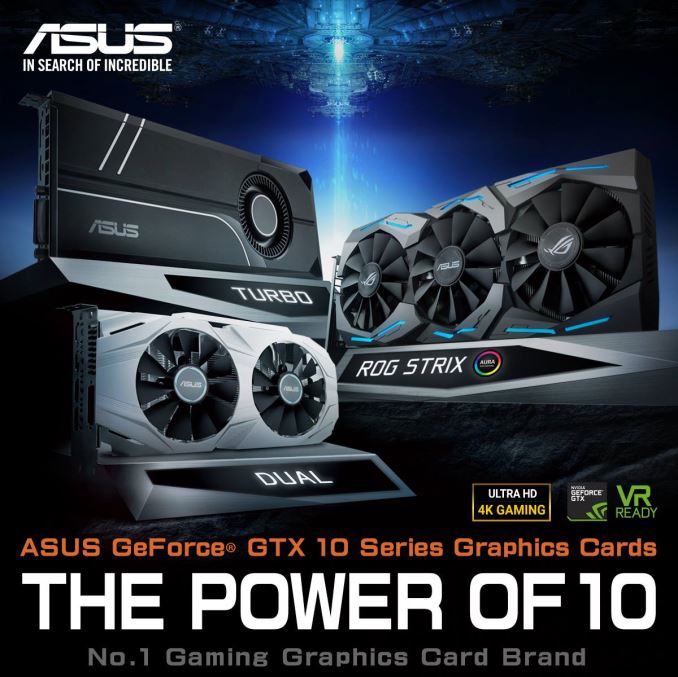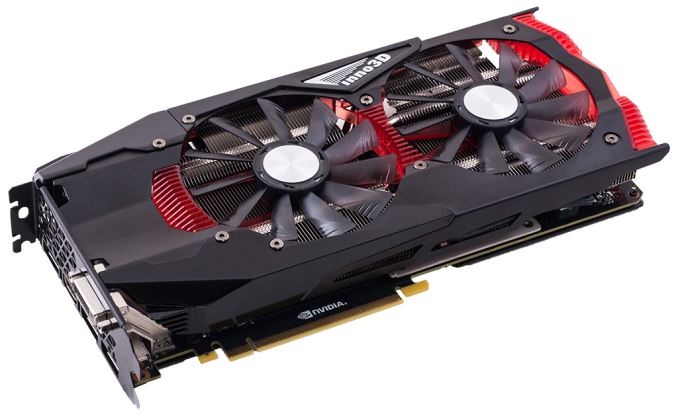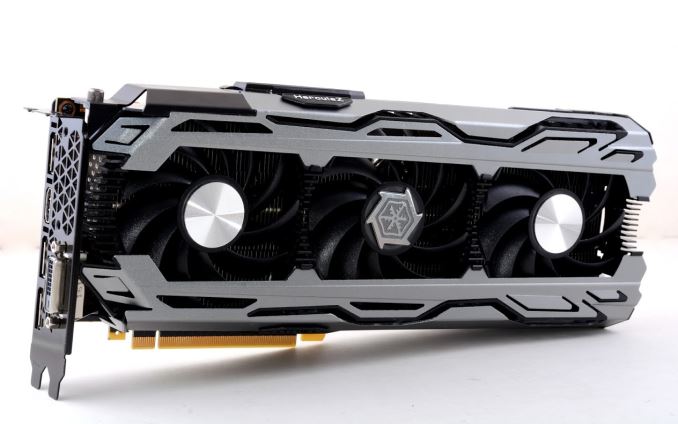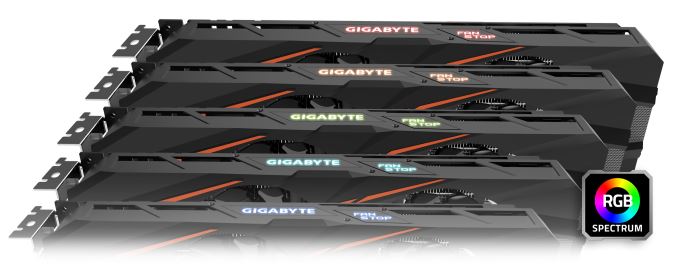ASUS, Inno3D, & Gigabyte Tease Custom GeForce GTX 1060 Cards
by Daniel Williams on July 8, 2016 9:00 AM EST
Yesterday we saw the announcement of NVIDIA's GeForce GTX 1060. Though NVIDIA is producing a reference Founders Edition card, as this is a more mainstream product, NVIDIA is leaving retail card production to their partners, who will be launching their custom solutions on day one. With the retail release still approaching what we have is more of a teaser then an announcement, but can begin to show us more of what the $250-$300 price bracket will start to look like as the GTX 1060 launch approaches.
ASUS has teased three separate renditions of the GeForce GTX 1060, as pictured above. These include a Turbo card with a blower, the Dual with two fans, and an ROG STRIX card. The last of which has the same cooler as the ROG STRIX 1080 and 1070, and as hinted by the AURA logo may feature the same RGB lighting found in the GTX 1080 and GTX 1070 ROG STRIX cards. There is no news yet on specs or performance numbers, or price and release date for these cards, but we should see those as soon as the July 19 release of the GTX 1060.
Inno3D has announced that two cards are on the way. First is the Inno3D GeForce GTX 1060 Gaming OC X2, which features two fans and translucent highlights. We don’t yet know of any physical details aside from what is pictured. Next we have the Inno3D GeForce GTX 1060 iChill X3. This card appears to be longer and also has three fans. While this cooler may be more effective than the two fan Gaming OC X2 card, it appears that these cards have identical specifications with a boost clock of 1784 and memory clock of 8.2Gbps. That identifies these cards with a factory overclock, but performance should be identical with the numbers that are currently reported.
Finally, in the truest definition of a teaser by not even showing the whole card, Gigabyte is teasing its GTX 1060 G1 GAMING. The card features a dual fan Windforce X2 cooler, with RGB lighting built into the shroud. Gigabyte has also disclosed that the card will feature a 6+1 phase power design (as opposed to 3+1), which indicates that they'll be using a custom PCB for their card and not NVIDIA's reference PCB.
Mainstream NVIDIA card launches typically feature semi and fully-custom designs from NVIDIA's partners right off the bat, so no doubt we'll see more custom cards unveiled as we get closer to the 19th. Meanwhile with vendors no doubt eager to lock in sales with premium cards, it remains to be see how many of these designs will actually approach the $249 MSRP NVIDIA has announced.
Sources:













55 Comments
View All Comments
TheinsanegamerN - Friday, July 8, 2016 - link
Am i the only one that finds these cards kind of hilarious? These are 120 watt TDP cards, yet they all have massive multi fan coolers and flashy bits, some even have LEDs!Compare this to the fermi days, when a mid range ~150 watt TDP card got a single fan cooler that was nothing special, dual fan for a high end model. These new coolers are ridiculous for a $250 GPU.
ImSpartacus - Friday, July 8, 2016 - link
Yeah, I've found that to be interesting. I think the cooler "inflation" might also have something to do with why we don't see single slot cards. For whatever reason, "big" coolers are preferable in all aspects.edzieba - Friday, July 8, 2016 - link
Same reason RAM heatsinks still exist, despite performing no function whatsoever. People perceive "big cooler = more good" regardless of all other factors.menting - Friday, July 8, 2016 - link
RAM heatsinks are useful, provided that they are installed properly (which the majority aren't)TheinsanegamerN - Friday, July 8, 2016 - link
Modern RAM isnt reliant on a good heatsink like SDRAM was. DDR4, even OCed, doesnt really get hot at all.Flunk - Friday, July 8, 2016 - link
They aren't generally installed properly because they're totally pointless on modern RAM.Samus - Saturday, July 9, 2016 - link
Considering all the memory on GDDR5 cards uses 15-20w TOTAL I don't see why even passive cooling would be necessary. That's about 2.5w per die over a 40mm2 area. GDDR5X uses even less power...Back when memory was still 65nm and ran at 3.3v, yeah, ramsinks helped. Even since DDR2 and 1.8-2.0v power envelopes it's just asthetics.
Eden-K121D - Monday, July 11, 2016 - link
aesthetics matterpoohbear - Monday, July 18, 2016 - link
RAM sinks were created for RDRAM wayyy back in the day because the heat would accumulate on each ram chip. With DDR Ram the heat is spread over the whole stick, so it's purely for aesthetics. This is doubly so for DDR with low voltage.Oxford Guy - Friday, July 15, 2016 - link
Big coolers are objectively better if they are well-engineered. Tiny loud fans stink. The only exception is if a vapor chamber design is used in which case the overall space needed for part of the cooling (not the fan) is reduced.